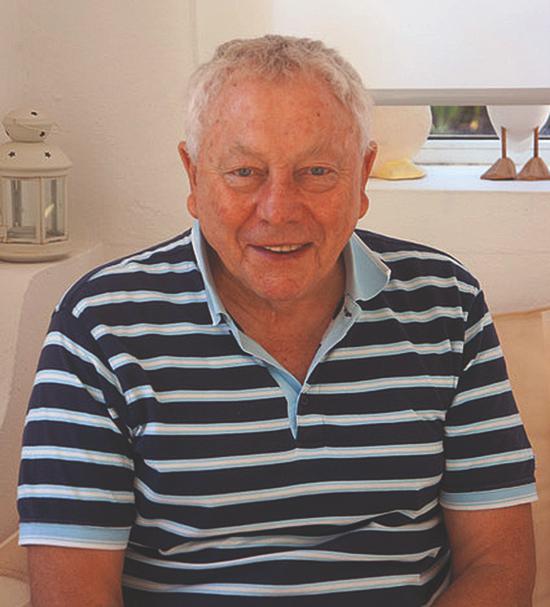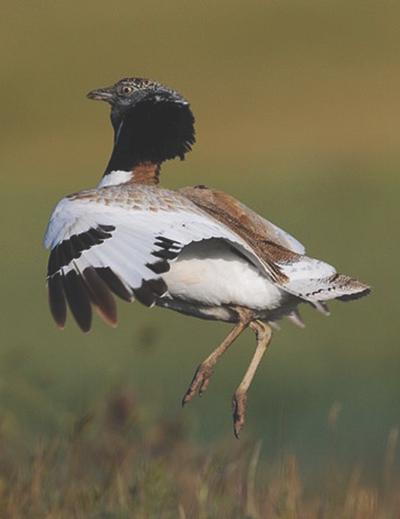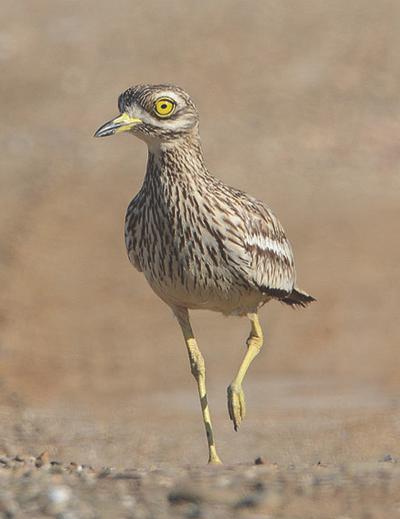Clive Viney is the co-author (with Ray Tipper) of the book “Algarve Wildlife: The Natural Year.”
As a nature lover and a long-term resident of Tavira, he is alarmed at the erosion of land and the destruction of natural habitats in the nature reserve near Castro Marim. Part of the Reserve has been given over to “the latest fad of avocado planting”.

He is asking questions and demanding answers from IICNF (Institute for Nature Conservation and Forests), SPEA ( Portuguese Society for the Study of Birds) and other agencies. His actions have prompted the European Commission’s Directorate-General for Environment to take an interest and investigate whether the planting of numerous avocado trees in the nature reserve has breached a European Directive.
The questions he has been asking include: how was it possible that the traditional grassland in the nature reserve, close to Castro Marim, which is the natural habitat of the little bustard, has been has been destroyed and given over to avocado production? Is or is not the reserve located in a special protection area for birds or a special area of conservation demarcated by the EU Birds and Habitats Directive? Does this planting breach EU legislation? The Directorate-General for Environment is also questioning the destruction and wants answers. Should similar questions be asked in the Portuguese Parliament?
Why are you so interested in this land near Castro Marim?
I come to Cerro do Bufo, near Castro Marim, every six months or so, to walk and see the wildlife. I visited in late September this year and I was horrified by what I saw, a lifeless land. The low grassy hills at the heart of the reserve were gone, replaced with black plastic and many hectares of avocado trees. I went back at the end of October with my camera. There were no signs indicating private property and I did not go through any gates, but a car with a young man driving came towards me and asked me what I was doing. He told me to stop taking photos as they were not allowed. He asked for my camera, but I said I would leave and left promptly with my camera intact. It made me wonder what he was protecting and why? I would like to have seen a sign saying who had planted the trees. It’s quite shocking what has been done to the land. I’m not against monoculture, but in the centre of a nature reserve, it’s tragic. Before these trees were planted, this area was farmland, pastureland, but nothing of any importance was grown on it. I always thought that a nature reserve would be protected from monoculture.
What is the impact on wildlife?
The little bustard is an extraordinary bird that naturally breeds there, but it won’t breed there again, as it likes an open landscape. It will not have a breeding ground there in the future. Indeed, in the Algarve, this was probably the last place that they bred. So this bird will likely not be seen again.
Previously, you could see other birds there, such as the golden plover and the northern lapwing, as well as flocks of larks and buntings. It was also one of the best places in the Algarve for spotting cuckoos, and you could frequently see a common crow, a peregrine falcon or a marsh harrier disturbing the other birds. And the large Iberian hares were another common feature. The migratory birds passing through the reserve included larks, wheatears and wagtails.They’re all gone now because of what I suspect is an EU grant to the farmer to grow avocados.
So, who do you think is responsible for the destruction of this habitat?
Well, Instituto Conservação da Natureza e das Florestas (ICNF) has a building in the reserve. It is not easy to access unless you are determined. I haven’t seen them patrolling. I ’m not sure what they do. What is happening in the Algarve is genuinely shocking and someone must take responsibility. This plantation has destroyed the heart of one of our most famous nature reserves and dealt an irrecoverable blow to the area’s biodiversity. I have contacted SPEA, the Portuguese Association for the protection of birds. They wrote back and asked me for a map which I have sent. If you look at the map, the green area, that huge chunk, is now all avocado trees. I have heard no more from SPEA. I have also contacted the British Bird Association, the RSPB. Even though they are a British Association, they have many international interests. They have referred the matter to BirdLife International. I have so far had no real response from these Associations — just silence.

What would you like to happen?
I think we are faced with a fait accompli. What I want is the restoration of the original habitat. But I don’t think I’m going to get that. If they have an EU grant, if that is true, then I can’t see how that can be reversed. Perhaps there’s something we can do. There’s still a lot of other land in the reserve, so we can stop it happening again. We can make the public aware of what is happening. We can try to make sure it doesn’t occur anywhere else in the Algarve or in Portugal. We can ask questions about licences for water. Why are such licences being given? Are more wells being dug? What chemicals are being used and put into the ground? Why are birds and other wildlife not being protected?
Is this the first time you’ve encountered this loss of a natural habitat?
No, a similar thing happened in the Ria Formosa, where they built large plastic greenhouses for growing strawberries. Who on earth gave them the approval? Is it the same organisation (ICNF) as in Castro Marim?
The Ria Formosa is the most sensitive part of the bird habitat. There are lots of salt pans that are very attractive to migrant birds. There are so many brownfield sites that they could have built the strawberry farms on, but they’ve done it there. The area used to be the breeding ground for the stone curlew. Because of the greenhouses, they don’t breed there any longer.
So, what is the primary question that needs an immediate answer?
Well, how could this have happened? Who approved it at Castro Marim? What are the people doing in that building in Castro Marim (ICNF)? The building is six or seven years old, but it has never been maintained. They were given a grant to put up information boards, mark out trails, build a bird-watching hide. The bird-watching hide has always been locked. The trails are overgrown. the signs have all been destroyed. I think visitors looking for the Interpretation Centre will find an uninviting building. I am a great believer that if you create a nature reserve, then you should let the public have access to it. Children should be able to go in and visit. The reserve is part of Portugal’s natural heritage. It isn’t an intangible heritage. It should be protected for future generations. I’m not going to let this go. I’ve written to so many people and we need to make sure the public gets behind this and stops any more devastation in the future.
Notes:
Netflix – Rotten – The Avocado War.
In the 1970s avocados were sold as a luxury food. Now they are marketed as a super food. Each year, 11 billion avocados are consumed worldwide.
Avocados prefer a humid environment and need a good water supply.
Rotten – The Avocado War on Netflix is worth watching for its frightening portrayal of the impact of avocado farming. Two major threats to farmers are the rise of cartels in Mexico and the lack of access to water because of avocado production in Chile.
The drought in California has meant farmers are having to reduce avocado production. Similarly, in Chile, avocado farms taking water from the two main rivers has meant small traditional farms can no longer access water without payment. Small farmers are selling their land because of the water rights due to large-scale avocado production.
It is estimated that the Mexico drug cartels make $152 million a year from growing and selling avocados.
https://firstwefeast.com/eat/2015/02/blood-guacamole-mexican-cartels-run-avocado-trade-and-extort-farmers
It takes 220 gallons of water to grow an avocado.
http://www.slate.com/articles/technology/future_tense/2014/05/_10_percent_of_california_s_water_goes_to_almond_farming.html?via=gdpr-consent
 Eco123 Revista da Economia e Ecologia
Eco123 Revista da Economia e Ecologia

